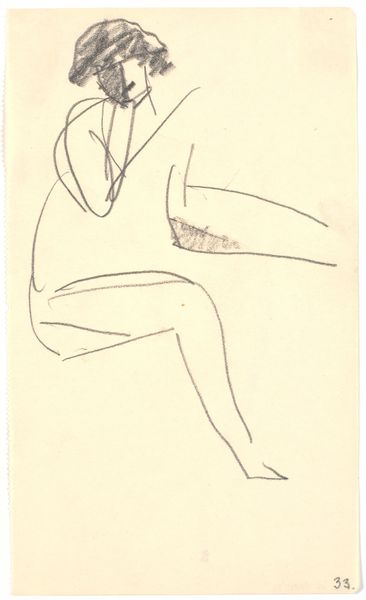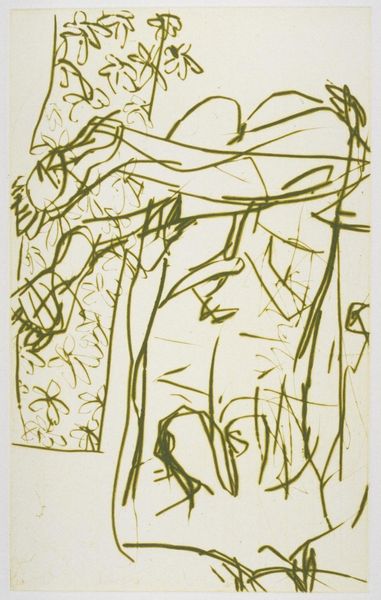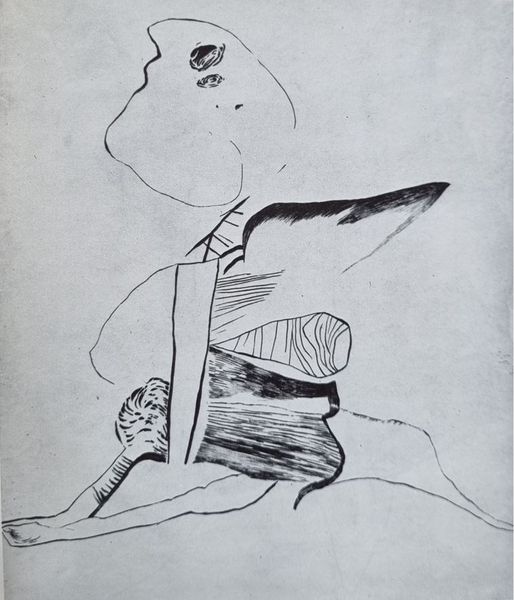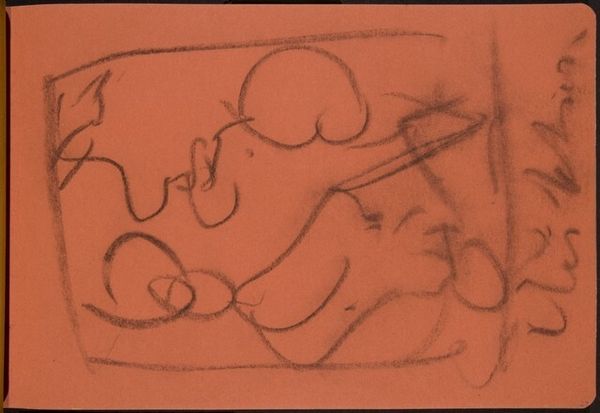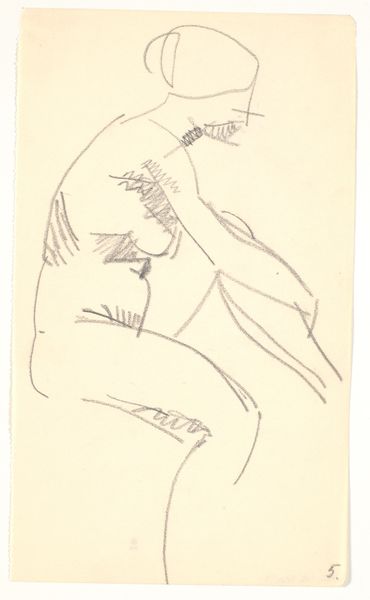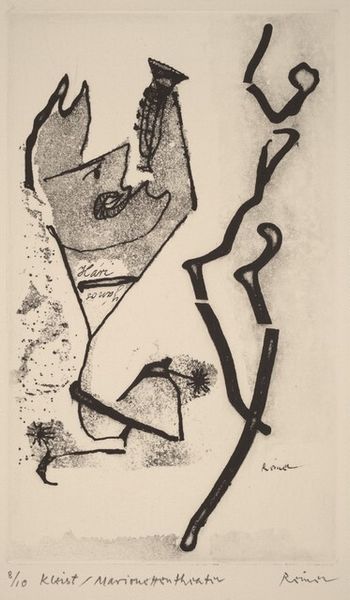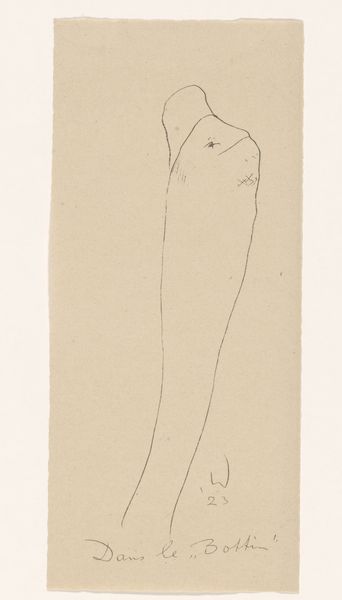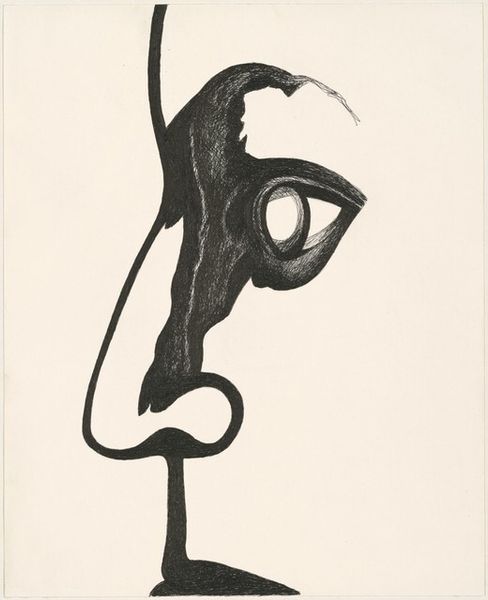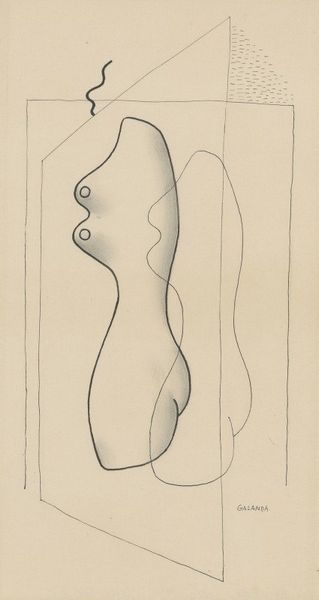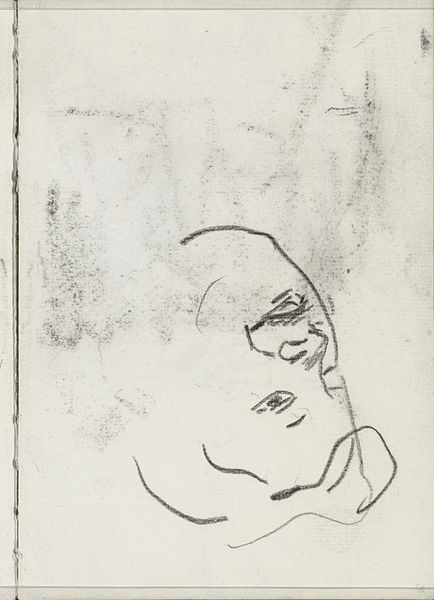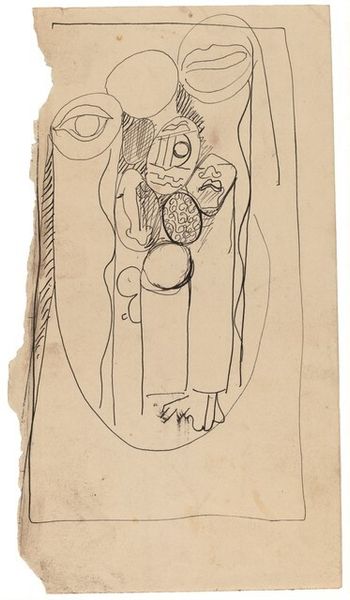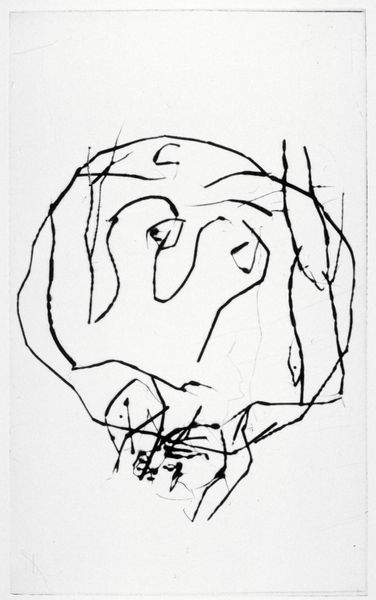
drawing, ink, pen
#
drawing
#
ink drawing
#
pen illustration
#
pen sketch
#
figuration
#
form
#
ink
#
line
#
pen
#
nude
Dimensions: overall: 76 x 50.8 cm (29 15/16 x 20 in.)
Copyright: National Gallery of Art: CC0 1.0
Curator: Take a look at this striking ink drawing, simply titled "Nude," created by Jean Negulesco in 1953. It's a superb example of line drawing, focusing on form with incredible economy of means. Editor: There’s a melancholic air to this piece, almost an isolation. The way the figure is hunched, turned in on itself…it speaks of vulnerability, perhaps even a commentary on the objectification inherent in the nude form as a historical construct. Curator: I see what you mean. The simplicity is deceptive; the singular unbroken line used for the figure itself is masterful, directing the eye from the coiled hair down through the posture to the twisted, knot-like construction of what I assume is the feet. This deliberate linearity avoids objectification by resisting naturalism. The tools themselves, simple pen and ink on paper, provide the image's strength, inviting scrutiny of the artist's hand, the physical gesture that gave it life. Editor: But let’s consider what it means to present a "nude" at this time, just after the Second World War. While it's not overtly sexualized, the drawing still participates in the historical gaze that positions women, and particularly their bodies, as objects for consumption. To what extent is Negulesco challenging this tradition or simply perpetuating it? I think there is an inherent tension there. The line seems to flow organically, yes, but it also rigidly delineates the figure within existing frameworks of representation. Curator: I can't ignore that the signature also has a part to play. Negulesco isn't widely known for his drawing so this intimate study has all the signs of an amateur attempting to display his virtuosity; what might have been seen at the time as merely casual studies of form now sit in galleries. Perhaps our expectations of 'fine art' ought to adapt to absorb works like this as we focus our attention on the labor of the hand itself. The gestural performance here seems, as you suggest, at odds with established boundaries. Editor: Absolutely. It makes me reconsider my initial reading and explore the more nuanced conversations it brings forth concerning power, visibility, and the complex dialogue between artist, subject, and viewer, even today. Curator: Agreed. Considering it, I’m appreciating now more than ever Negulesco’s decision to let the quality of the materials guide the direction, revealing form and also revealing that historical baggage that demands discussion. Editor: I leave with an appreciation for the interplay of history and materiality. It's through this tension that we uncover more profound interpretations.
Comments
No comments
Be the first to comment and join the conversation on the ultimate creative platform.
